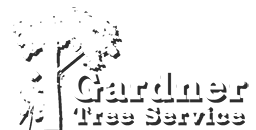If you’ve lived in the Gulf South long enough, you’ve seen it: a row of once-majestic trees with their tops lopped off like someone got carried away with a chainsaw and a bad idea. It’s called tree topping, and while it might seem like a quick fix for height control or storm prep, it’s one of the worst things you can do to a tree—especially down here where heat, humidity, hurricanes, and heavy rains are just part of the scenery.
What Is Tree Topping?
Tree topping is the practice of cutting off the upper portion of a tree’s main branches, often leaving behind stubs or weak sprouts. Some homeowners believe it will make the tree safer or encourage healthier growth. In reality, topping causes stress, decay, instability—and ultimately shortens the tree’s lifespan.
Why It’s Worse in the Gulf South
Our region isn’t just known for its food and festivals—it’s known for its fierce weather. And when you top a tree in this climate, you’re setting it up to fail in more ways than one:
-
Weakened Storm Resistance
Topping removes the tree’s natural shape and balance. The regrowth that follows? Weak, poorly attached limbs that are far more likely to snap in high winds. That’s a recipe for disaster when hurricane season rolls around.
- Heat & Sun Damage
In our subtropical climate, the sun doesn’t play. Topping exposes inner limbs and bark that were once shaded, often leading to sunscald, bark splitting, and long-term tissue damage. - Insect & Disease Vulnerability
Fresh topping cuts don’t heal well. They invite fungus, decay, and insects like termites and borers. And let’s face it—Louisiana doesn’t need help attracting more bugs. - Rapid, Ugly Regrowth
Instead of controlled growth, a topped tree shoots out dozens of weak, vertical water sprouts. These grow fast, look messy, and are structurally unsound. You’ll be calling a tree service again—and sooner than you think. - Permanent Disfigurement
A topped tree rarely recovers its natural beauty. Its silhouette becomes unnatural, and in many cases, the damage is irreversible. That live oak that once shaded your yard like a cathedral ceiling? Gone for good.
Better Alternatives to Topping
If you’re concerned about the size, safety, or storm risk of your trees, a certified arborist can help you explore healthier options:
-
Crown thinning – Selectively removing smaller branches to improve airflow and reduce weight.
-
Crown reduction – A methodical shortening of limbs while preserving the tree’s shape and integrity.
-
Structural pruning – Great for young trees to train strong future growth.
These techniques maintain the tree’s health and appearance while reducing risks—without butchering it.
Final Word: Topless Trees Are Healthier Trees
Topping might seem like a quick fix, but it comes with long-term consequences for your landscape, safety, and wallet. In the Gulf South, where trees work overtime to provide shade, shelter, and charm, they deserve better.
Instead of topping your trees, treat them like the living assets they are. Consult with a professional, invest in smart pruning, and let your trees grow tall, strong, and storm-ready.


